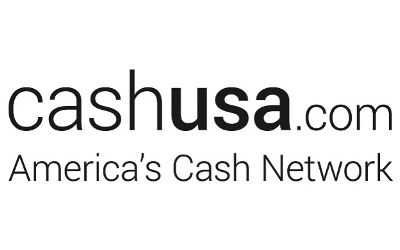For borrowers with a limited income, overcoming financial difficulties can be a challenging task. Unexpected expenses can be difficult to cover on top of regular monthly bills, and getting approved for a personal loan can be even harder due to a low income.
However, there is hope and help available. Many lenders are open to providing assistance to those in need, despite their financial status.
5 Best Low-Income Loans
For those with limited income, finding affordable lending options can be a challenge. Fortunately, there are lending marketplaces that cater specifically to this demographic. Here are the top five lending options for low-income borrowers:
1. CashUSA
CashUSA is another online lending marketplace that offers personal loans that range between $500 to $10,000, with interest rates ranging between 5.99% and 35.99%.
2. MoneyMutual
MoneyMutual is an online marketplace that specializes in working with consumers that have poor credit scores. The company offers quick, short-term loans for up to $2,500.
3. Bad Credit Loans
Bad Credit Loans is another lending marketplace that works with low-income borrowers. They offer personal loans with loan amounts up to $5,000, with an APR range between 5.99% and 35.99%. The loan term is typically 3 to 60 months, and there is no minimum credit score.
4. PersonalLoans.com
PersonalLoans.com is a lending marketplace, and it provides some of the most flexible loan terms available. For example, you can apply for a personal loan between $500 and $35,000, with an APR range between 5.99% and 35.99%.
5. CashAdvance.com
CashAdvance.com is a loan aggregator that connects low-income borrowers with bad credit to short-term loans. You can get personal loans for up to $1,000 from the company’s network of lenders.

How to Compare Low-Income Loans
When searching for the best loan option, comparing multiple offers is essential. This can be particularly difficult when seeking a low-income loan and options appear limited. However, regardless of your financial situation, the core elements to consider remain the same.
Interest Rate and APR
When receiving a quote for a low-income personal loan, you will typically see both the interest rate and the annual percentage rate (APR). The interest rate reflects the basic cost of the loan, while the APR represents the true overall cost, taking into account both the interest rate and loan fees. Find out if the personal loan has a fixed or variable interest rate.
Fees
Carefully consider all fees included in any loan offer. Personal loan lenders charge certain fees that are standard. However, other fees vary depending on whether you’re borrowing from a bank, credit union, or online lender.
Here are some of the most common fees:
- Origination fee: A common fee a lender may charge for processing your loan, paid upfront.
- Prepayment penalty: Lenders often charge prepayment penalties if you pay off your loan before the close of the agreed term.
- Late-payment fee: If you miss a monthly payment, you’ll probably be liable for a late payment fee. These will vary widely from lender to lender, so make sure you’re clear on the fine print even if you’re certain that you can make the loan payments on time.
Repayment Terms
Many low-income lenders will offer personal loans that come with short, long or flexible terms. A traditional personal loan typically comes with terms ranging from 12 months to 84 months, but certain lenders may offer an extended loan period.
It’s worthwhile deciding on an ideal range for your repayment terms before shopping for quotes. Remember that a long-term loan can result in lower monthly payments, but on the other hand that will mean paying more in interest over the life of the loan.
How to Apply for a Personal Loan
You will find that regardless of which lender you choose, the application process for personal loans will be similar:
- Budgeting: The first step is to calculate how much you need to borrow, and factor in monthly payments to your overall budget. Getting clear on your numbers will make finding the best loan for you much easier.
- Prequalification: You can benefit from prequalification tools with many online lenders, just make sure they don’t conduct a hard inquiry on your credit. Prequalification is the best way to get a clear picture of how much your monthly payment will be and what interest rates are available to you.
- Compare Offers: Prequalification also allows you to negotiate various offers against each other. Make sure you take the time to responsibly compare all the best offers you’ve found, and be certain about the exact details of your loan terms and conditions.
- Finalize & Sign: Once you’ve decided on a loan and been approved, you’ll need to sign a loan agreement. Loan funds are usually sent by direct deposit and can be available within five business days.
Can I qualify for a personal loan with low income?
Absolutely, securing a personal loan on a modest income is feasible, but the key is to review your options carefully. Lenders might perceive low-income borrowers as a higher risk, potentially leading to steeper interest rates and less advantageous terms.
Additionally, when applying, it’s beneficial to consider all sources of income you have. This includes regular wages, but also other income streams such as alimony, child support, or government benefits, as they might bolster your application.
For those with limited income, online lending marketplaces offer a viable solution. These platforms specialize in pairing borrowers with lenders attuned to their unique financial needs. To begin, submit an application, detailing your personal details and all income sources. This approach will present you with various lenders, facilitating a comparison to pinpoint the most favorable rates and terms for your situation.
Providing Proof of Income for Low-Income Loans
Some financial institutions are willing to work with people who have limited income. However, you will need to provide proof of income to qualify for low-income loans. Regular monthly income shows the lender you have the cash flow to repay the loan every month. Most lenders want to see that you bring in at least $800 to $1,000 per month.
However, you don’t necessarily need to be employed full-time to find lenders willing to work with you. The only requirement is that you have a consistent source of income, such as Social Security or disability payments.
If you can’t provide proof of your monthly or annual income, you’ll need to consider other alternatives. Applying with a cosigner is a good idea since their income will be considered as well.
If that isn’t an option, you can consider taking out a cash advance on a credit card or refinancing your car or home for extra money. These options aren’t ideal, but they could help you get through this challenging financial season.
Alternatives to Low-Income Loans
Low-income personal loans aren’t your only option for getting the cash you need. A growing number of companies are offering financial services to financially underserved Americans. They offer alternatives to low-income loans that can save you money and improve your credit score.
Secured Loans
Secured personal loans provide borrowers with an avenue to obtain funds by using an asset, such as property or a vehicle, as collateral. The collateral’s value can influence the loan amount and often results in lower interest rates compared to unsecured loans, as the lender has added assurance of recouping their funds.
However, it’s crucial to understand that if a borrower defaults on a secured personal loan, the lender is entitled to seize and sell the collateral to recover the owed amount. This makes it imperative for borrowers to assess their ability to repay before committing.
Cosigned Loans
Securing a cosigner for your loan can offer numerous benefits, including more favorable loan terms and a lower interest rate. Consider reaching out to a trusted friend or relative with a strong credit score to co-sign on a personal loan with you.
It’s important to note that co-signed loans come with shared financial responsibility, meaning the co-signer will be held accountable if you fail to repay the loan. Before proceeding, check with your lender to determine if co-signing is an option.
Credit Unions
For low-income individuals, local credit unions can provide more advantageous loan terms compared to traditional banks or online lenders. Furthermore, they often have less stringent eligibility criteria. Consider exploring the loan options available at your credit union.
If you are not currently a member, it may be worth joining to take advantage of the benefits they offer. Here’s a list of the best credit unions that anyone can join.
Credit Cards
If you’re seeking short-term financing, a credit card can be a great option, but only if you have a credit history that meets the requirements. However, obtaining a cash advance using your credit card can come with a significant cost.
But, if you’re able to pay off your entire balance before the due date, you might be able to dodge paying any interest. In that case, utilizing a credit card as a source of financing can turn out to be a budget-friendly solution. Just make sure to keep an eye on the terms and conditions before making a decision.
Payday Loans & Auto Title Loans
A payday loan can be tempting when you’re in need of quick cash, but be aware that they often come with sky-high interest rates, making it challenging for people to repay their debt.
When opting for an auto title loan, you put your vehicle on the line as collateral. And if you are unable to repay the loan, you run the risk of losing your car. It is advisable to steer clear of both payday and auto title loans.
Pawn Shop Loans
Pawn Shop loans present another alternative for short-term financial needs. Here, borrowers offer personal items as collateral in exchange for a loan. The value of the item determines the loan amount.
While they provide immediate cash without the necessity of a credit check, it’s essential to remember that interest and fees can be high. Moreover, if the loan isn’t repaid within the agreed time frame, the pawnshop has the right to sell the item to recover its value.
Family Loans
Nobody enjoys asking friends or family for a loan. However, if you’re considering something as risky such as a payday loan, borrowing informally from friends or family could be a great option. Ensure that all agreements are in writing, and discuss a repayment plan before borrowing in this way.
Community Assistance
Remember to look to your local community for financial assistance. There could be local resources that you haven’t considered, such as community groups and nonprofits that offer emergency credit or cash advances.
Your employer may also have financial-assistance programs to help you through a rough patch.
How to Spot Loan Scams
There are plenty of safe low-income loan options. However, there are no shortage of predatory loan companies targeting those who are most in need. That’s why it’s important to know how to spot the difference between a legitimate lender and a scam.
No Credit Check
A reputable lender will never guarantee loan approval without checking your credit scores. Most lenders will want to see your credit report, income, and other financial documents before even considering your loan application.
Origination Fees
Many lenders will require things like an approval or origination fee. However, origination fees are typically deducted from the total cost of your loan. If a lender is requesting upfront payment, in any form, they’re unlikely to be trustworthy.
Time Demands
A reputable lender will never pressure you into making a decision, or taking urgent action regarding your loan. Legitimate lenders have no need to push you for time. They will always give you the space you need to make your decision and stick to the agreed repayment terms.
No Physical Address
Never deal with a financial institute or lender that doesn’t have a physical address. Even online lenders will be registered to a searchable business address.
You should find a physical address for any good lender on their website. This is one of the easiest ways to identify an illegitimate lender.
Lender Initiates Contact
Scammers will often use online platforms to market both poor credit and debt consolidation loans. No legitimate lender will make first contact with you regarding a loan.
Summary
If you bring in at least $800 in income per month, you could qualify for a personal loan. Apply for a personal loan through a lending marketplace so you can receive loan offers from multiple lenders. Pay close attention to the loan amount, monthly payment, APR, terms, and fees.
Frequently Asked Questions
How does a personal loan work?
Most personal loans are unsecured, meaning they don’t require collateral. Unsecured loans are paid out in a lump sum, and are repaid in monthly installments for a specified period.
The period during which you make monthly repayments on your loan is known as the loan term. Loan terms usually range from 24 to 72 months.
What is the easiest loan to get approved for?
If you don’t have good credit, the easiest loans to get approved for are payday loans, title loans, and bad credit loans. However, keep in mind that the easier it is to be approved for a loan, the riskier it is to borrow.
Can I get a personal loan without proof of income?
Typically, the easiest way to secure a personal loan without proof of income is to look for a secured loan. Most lenders won’t require you to provide proof of income when applying for a secured loan since the risk is guaranteed by listing collateral.
Can I get a loan even if I’m not working?
Yes. It is possible to secure a personal loan even if you are currently unemployed. Most unsecured personal loans will have minimum income requirements and you’ll need to provide proof of income to qualify. However, your proof of income doesn’t have to be a salary.
Social Security payments, social assistance, and other documented forms of income can also help you qualify for an unsecured personal loan.
See also: Loans for the Unemployed with Bad Credit
What is the lowest credit score you can have to get a personal loan?
Minimum credit scores will vary from lender to lender. So, if your credit score is low you might need to spend some time shopping around first. However, you can use the FDIC credit scoring system to get a good idea of where your credit reputation stands.
For example, a low credit score of 500 could still be enough to qualify for an unsecured personal loan. The catch is, you’ll be limited to working with subprime lenders and much higher interest rates.
What do banks look at to qualify for a personal loan?
When you apply for a loan, lenders will consider several major factors to determine your suitability for borrowing. In addition to your current income, your credit history, credit score, and debt-to-income ratio will all be considered.
If you can improve any of these factors before applying for a loan, you may be able to increase your chances of getting approved even with a low income.









